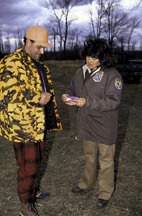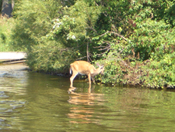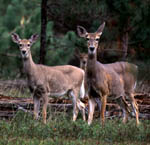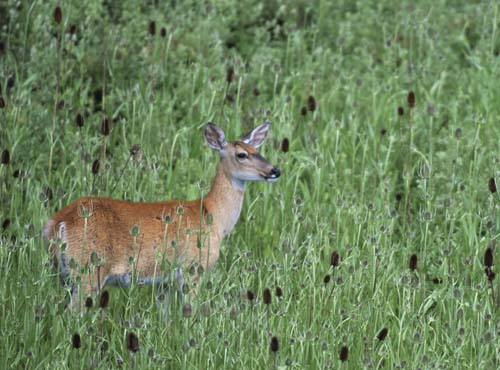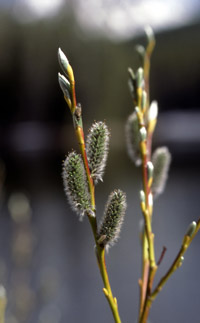In the North, the virulance of epizootic hemorrhagic disease in white-tailed deer varies greatly. The outbreak may be mild and kill only a few deer, or it may have population-level impact. This year in New Jersey, or at least parts of that state, EHD appeared to have an impact on the state’s exceptionally dense deer population levels.
(Read more from:
NJ.com, the on-line arm of the Newark Star-Ledger
NBC New York)
Now that it’s hunting season, the impact of the virus is being seen in a reduced harvest. During the muzzleloader season in the Great Swamp National Wildlife Refuge, less than half of the typical number of deer were taken, which may be a harbinger of rifle season numbers.
Read the story in MyCentralJersey.com. (And yes, the story goes on to other game topics before the end of the first page.)
Photo: License check in 2008, Great Swamp National Wildlife Refuge, NJ. Credit: John and Karen Hollingsworth, courtesy of the US Fish and Wildlife Service

